[javascript protected email address]
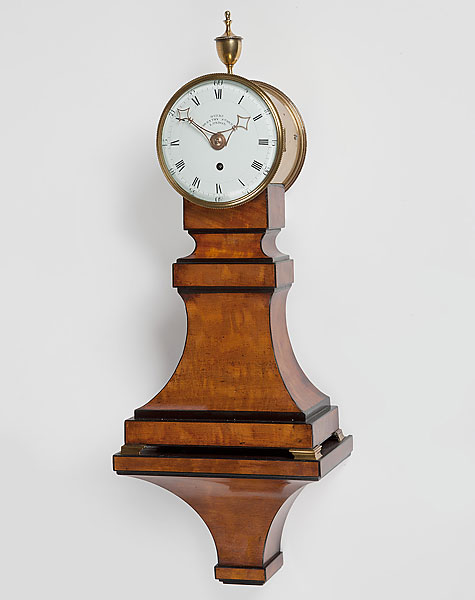
Thomas Weeks, London

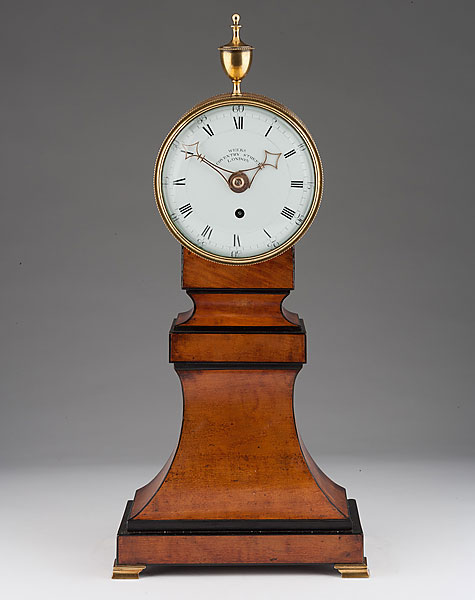
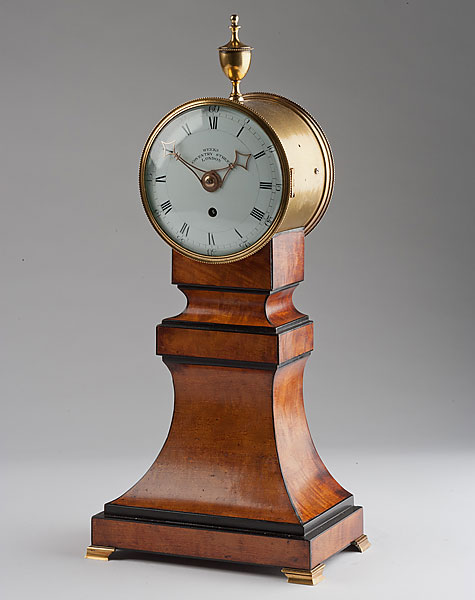
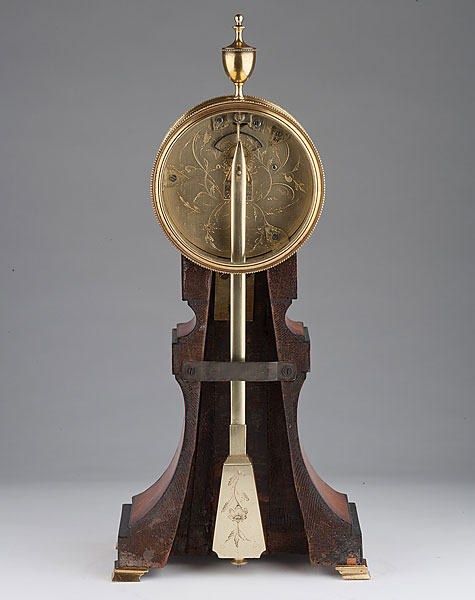
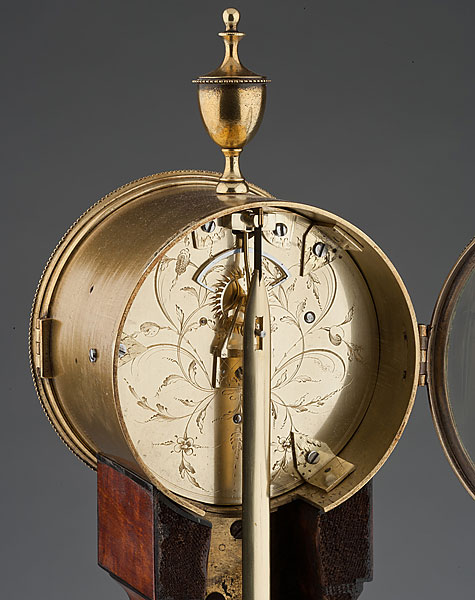
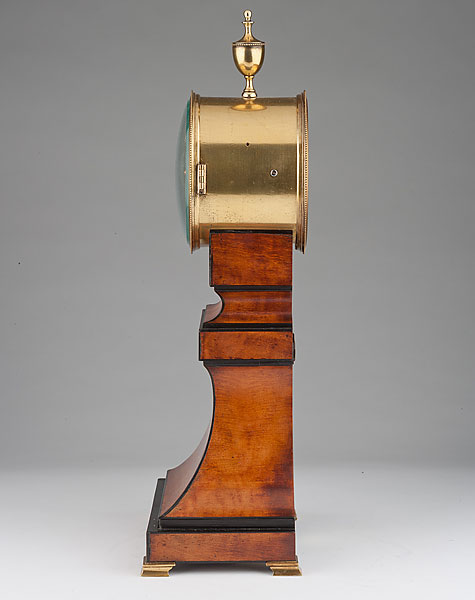
Circa 1820
Sold
15 inches high (clock only) 20 inches high (with bracket).
A very rare satinwood, ebony and brass mantel clock. CASE The lovely concave-moulded body has an out stepped base with ebonised mouldings raised on brass bracket feet. DIAL The 10cm diameter white enamel dial is signed WEEKS COVENTRY STREET LONDON and has a Roman & Arabic chapter ring with pierced gold hands. MOVEMENT The movement is has circular plates with four pillars and chain fusee and spring barrel, the going train terminates with Weeks�s trademark deadbeat escapement displayed on the backplate and has a brass-rod pendulum with Weeks�s wedge-shaped brass bob engraved with foliage � the backplate is similarly engraved with lovely scrolling foliage. Together with a purpose-made satinwood wall bracket. Thomas Weeks (1743-1834) established his museum of mechanical curiosities in Tichborne Street from 1788. Weeks followed the fashion established by James Cox and Henri Maillardet (of Jaquet Droz) for exhibiting highly ornamental automaton clocks as part of London''s great trade attractions. Derek Roberts (Mystery, Novelty and Fantasy Clocks, Atglen, 1999, p.169) notes that when James Cox disposed of his museum by lottery in 1775 a number of pieces, including an automaton silver swan, now at the Bowes Museum, Barnard Castle, were purchased by Thomas Weeks who subsequently exhibited them in his own museum.
